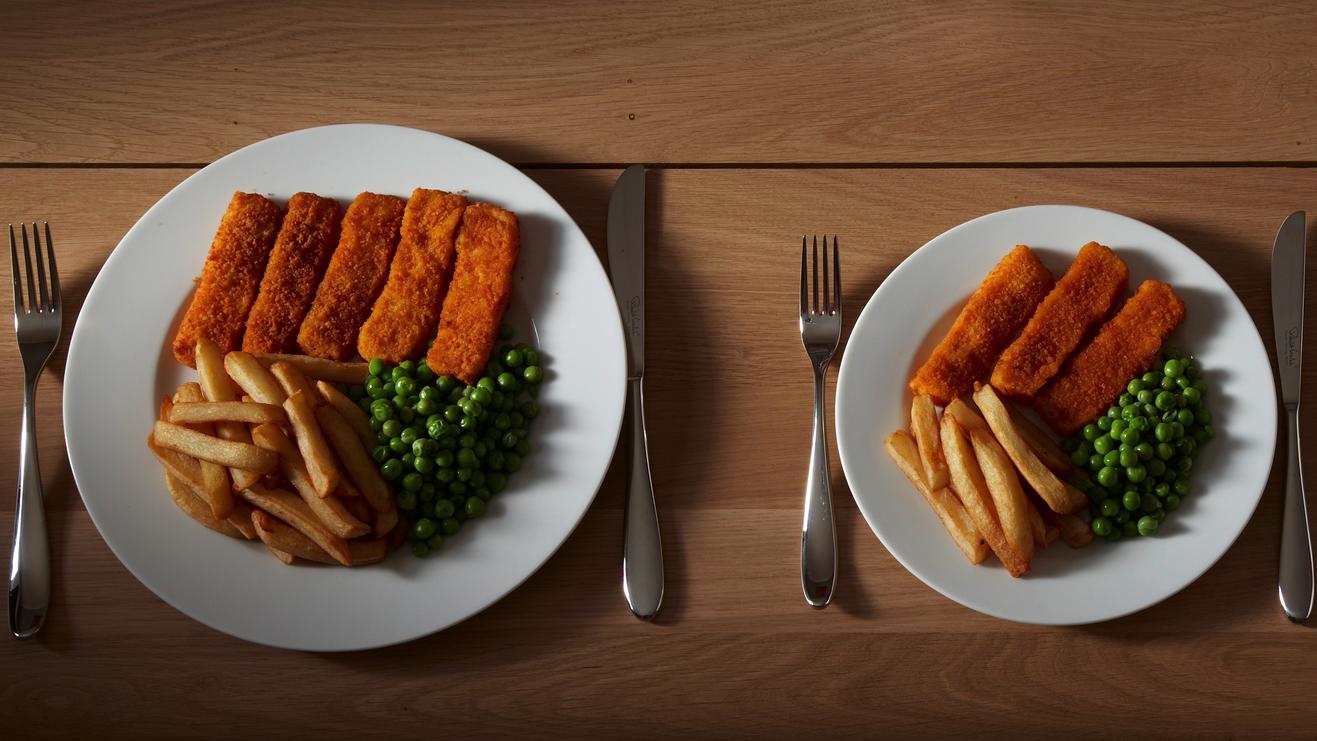By: Jeremy Partl, RD
We’ve all heard about portion distortion.
The fact is, nowadays in the US, serving sizes of individual foods, entrees, and even beverages are being super-sized.
If you have ever traveled abroad, you can instantly spot the difference between portions sizes. You would probably scoff at the size of your protein, the lack of carbs on your plate, or the few bites of dessert that you get with a meal.
But, are those actually more realistic portion sizes?
Let It Go
Unless you are dieting down for a specific purpose like a figure show or powerlifting meet, you really shouldn’t be weighing every single gram of food that you are consuming.
Who cares if the banana you are eating is 125 grams instead of 115 grams. Over time the consistency will get you the results you want, and not being perfect.
Weighing foods can be a big headache when it comes to making your nutrition sustainable. You can’t (or shouldn’t) be carrying around a scale to social events or when dining out.
But then, how am I supposed to stick to the nutrition plan and be consistent you ask?
Jedi Portion Skills
Luckily, there are easy ways to roughly guestimate portion sizes, with the help of your eyes and common reference items (or even your hand).
Let’s start off with some common recreational and sports items that you may be familiar with.
A 3-ounce portion of a protein is about the size of a deck of cards.
In terms of carbohydrates, the size of a baseball is about 1 cup of raw vegetables, or about 5 grams of carbohydrates. That same size is about 25-30g of a dense carbohydrate source like pasta, rice, or cereal.
Coming in a bit smaller is a medium-sized piece of fruit, which is similar in size to a tennis ball.
Finally, a serving of a healthy fat source is about the size of a ping-pong or golf ball.
If you aren’t a sports enthusiast, weekend warrior, or even just a recreational card player, you might like the other system that you can use.
We all have hands….at least hopefully!
You may not always have a deck of cards or a ball to compare to. However, your hands are always right alongside you and there for the ride. You might as well use what you have.
A serving of protein, 3-5 ounces, is about the size of your palm of your hand.
If you clench your fist together into a ball, you roughly get the size of a serving of vegetables.
For dense sources of carbohydrates, the sized of a cupped handful represents about 20-30 grams.
Finally, your thumb can be used to represent the size of a serving of fat.
The best thing about these measurements is that they are scaled to your body size and needs. Males and larger people tend to have greater energy needs, which is perfect because their hands are bigger. For smaller people and females, who generally need less, the serving sizes are a bit smaller.
Summary
Life gets easier, and you can be more consistent when you actually learn what proper portion sizes look like.
It really is a skill…. but luckily is one that is easy to pick up on with repeated practice.
If you would like more help in learning how to develop the skill of estimating portion sizes, or would like help determining how many servings of each you should be including at meals, jump over to our shop page. We offer affordable training and nutrition coaching plans that help you to reach your goals in a flexible manner.
